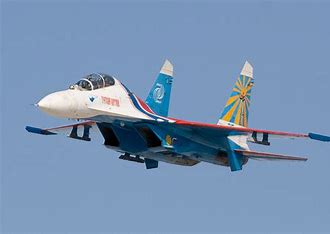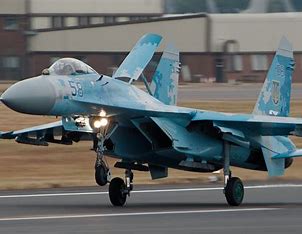
An MQ-9 “Reaper” intelligence and surveillance drone of the United States was downed after an encounter with a Russian Su-27 fighter over the Black Sea.

Prompting a strong response from the U.S. and adding fuel to an already tense situation in the region.

This incident comes amid heightened surveillance and reconnaissance activities near Ukraine, underscoring the potential for military miscalculations.

The U.S. Department of Defense reported that the unmanned aerial vehicle (UAV) was struck by the Russian aircraft, which resulted in the drone’s propeller being hit and forced U.S. forces to bring the drone down.

The U.S. Air Forces Europe and Air Forces Africa commander, James B. Hecker, described the Russian jets’ behavior as “reckless, environmentally unsound and unprofessional.”

Emphasized that “this incident demonstrates a lack of competence in addition to being unsafe and unprofessional.”

According to the United States, the drone was operating in international airspace and conducting routine operations when it was intercepted.

The collision was preceded by several instances of the Russian fighter jets dumping fuel on and flying in front of the MQ-9.

In contrast, Russian defense ministry statements painted a different picture, claiming that the MQ-9 drone had been flying towards Crimea, which Russia annexed in 2014, and encroaching upon territories Russia considers its own.

The ministry asserted that “Russian fighters did not use airborne weapons, did not come into contact with the unmanned aerial vehicle, and returned safely to the home airfield.”

Russian ambassador to the United States, Anatoly Antonov, criticized the flight of the U.S. drone near Russian borders.

Comparing it to a hypothetical scenario of a Russian strike drone appearing near New York or San Francisco.

He suggested that the U.S. should cease such close-proximity flights to Russian borders.

The MQ-9 Reaper is known for its significant loiter time, wide-range sensors, multi-mode communications suite, and precision weapons.

It is primarily used for intelligence collection and secondarily for engaging dynamic execution targets, capable of performing a variety of missions such as surveillance, reconnaissance, and precision strikes.
Relevant articles:
– Factbox-What happened to the U.S. drone downed near Ukraine? , Yahoo Movies UK, 05/11/2024
– ‘Swarm pilots’ will need new tactics—and entirely new training methods: Air Force special-ops chief, Defense One, 05/10/2024
– The US military isn’t ready for the coming drone war, Business Insider, 05/11/2024
– UN Agency Says Closing East Jerusalem HQ After Arson by ‘Israeli Extremists’, The Defense Post, 05/10/2024
